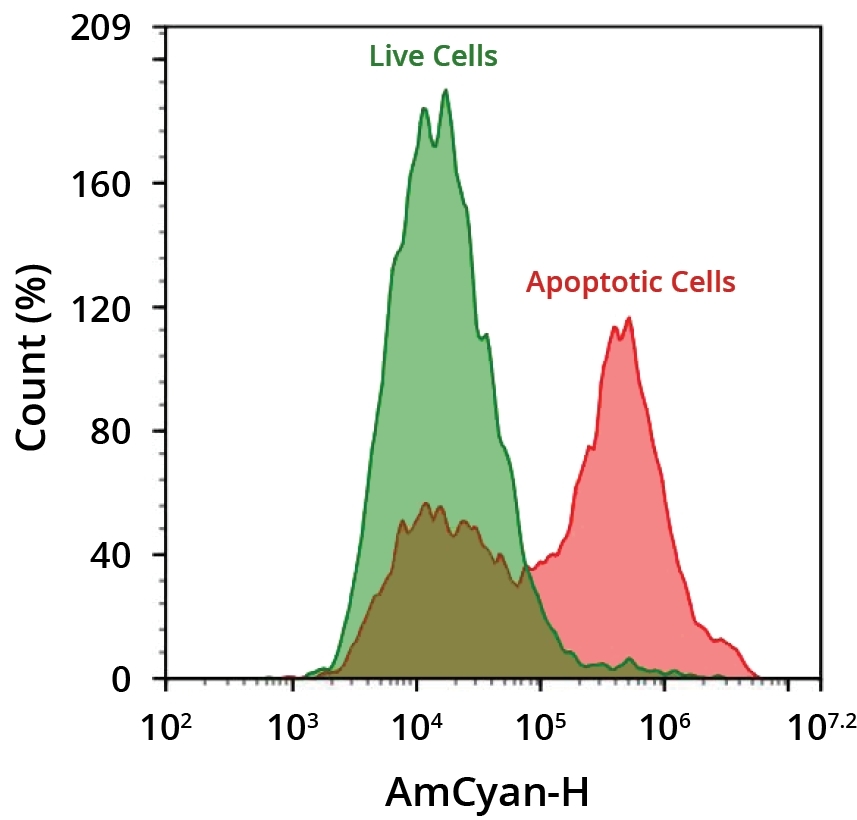ReadiLink™ Rapid mFluor™ Violet 510 Antibody Labeling Kit
Microscale Optimized for Labeling 50 μg Antibody Per Reaction
AAT Bioquest's mFluor™ dyes are developed for flow cytometry-focused applications. These dyes have large Stokes Shifts, and can be well excited by the laser lines of flow cytometers (e.g., 405 nm, 488 nm and 633 nm). mFluor™ Violet 510 dyes have fluorescence excitation and emission maxima of ~405 nm and ~510 nm respectively. mFluor™ Violet 510 SE is reasonably stable and shows good reactivity and selectivity with protein amino groups. This kit has all the essential components to perform two separate labeling reactions with no column purification needed. Each of the two vials of mFluor™ Violet 510 SE provided in the kit is optimized for labeling ~50 µg antibody. mFluor™ Violet 510 SE antibody labeling kit provides a convenient method to label small amounts of monoclonal, polyclonal antibodies or other proteins (>10 kDa) with the Violet Laser-excitable mFluor™ Violet 510 SE.

Figure 1. Overview of the ReadiLink™ Rapid Antibody Labeling protocol. In just two simple steps, and with no purification necessary, covalently label microgram amounts of antibodies in under an hour.


| Catalog | Size | Price | Quantity |
|---|---|---|---|
| 1110 | 2 Labelings | Price |
Spectral properties
| Absorbance (nm) | 410 |
| Correction factor (260 nm) | 0.464 |
| Correction factor (280 nm) | 0.366 |
| Extinction coefficient (cm -1 M -1) | 25000 1 |
| Excitation (nm) | 412 |
| Emission (nm) | 505 |
| Quantum yield | 0.86 1 |
Storage, safety and handling
| H-phrase | H303, H313, H333 |
| Hazard symbol | XN |
| Intended use | Research Use Only (RUO) |
| R-phrase | R20, R21, R22 |
| UNSPSC | 12171501 |
Contact us
| Telephone | |
| Fax | |
| sales@aatbio.com | |
| International | See distributors |
| Bulk request | Inquire |
| Custom size | Inquire |
| Technical Support | Contact us |
| Request quotation | Request |
| Purchase order | Send to sales@aatbio.com |
| Shipping | Standard overnight for United States, inquire for international |
Page updated on January 8, 2026

